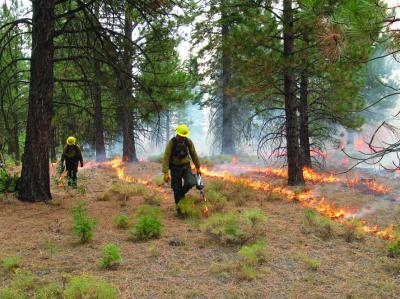The Ecological Society of America's first online-only Special Issue of Frontiers in Ecology and the Environment showcases prescribed burns around the globe, some of them drawing on historical practices to manage forests and grasslands in fire-prone regions.

This image shows a prescribed burn in Klamath National Forest, CA.
(Photo Credit: E. Knapp)